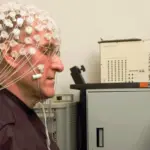
Psychophysical laws establish relationships between physical stimuli and effectual responses emitted by subjects; Thus, psychophysics establishes the relationship between physical stimuli and perception.
On the other hand, it also studies how external stimuli produce internal responses (subjective experiences), only accessible by the subject themselves through introspective processes. In this article we will learn about the Weber-Fechner Law considered the first law of psychophysics.
Background: Weber’s Law
Fechner, German philosopher, doctor by training and professor of physics and philosophy, developed a law in psychophysics, specifically the first law of psychophysics, based on the use of indirect methods. To do this, he started from Weber’s Law and the postulate that establishes the equality of fairly perceptible differences.
Regarding Weber’s Law, he established the concept of DAP (barely perceptible difference), as the unit of measurement of the differential threshold. According to Weber, DAP depends on the magnitude or intensity of the E (stimulus) and its mathematical formula is the following:
DAP = kx S (where “k” is a constant and “S” is the intensity of the stimulus.
However, Weber’s Law was only fulfilled when the stimulus tended to average values; Thus, it was true for most of the senses, as long as the intensity of the stimulus was not very close to the threshold.
Weber-Fechner law: characteristics
The Weber-Fechner law establishes a quantitative relationship between the magnitude of a physical stimulus and how it is perceived by the subject. This law was initially proposed by Ernst Heinrich Weber (1795-1878) (German doctor and anatomist) and later elaborated to its current form by Gustav Theodor Fechner (1801-1887), already mentioned above.
This law states that “the smallest discernible change in the magnitude of a stimulus is proportional to the magnitude of the stimulus.” This can be said in many other ways for us to understand; for example, that “the intensity of the sensation is proportional to the logarithm of the intensity of the stimulus”, or that “if a stimulus grows in geometric progression, perception will evolve in arithmetic progression.”
Example
To better understand the Weber-Fechner Law, Let’s illustrate it with an example: If we hold a 100 gram ball in our hand, we may not be able to distinguish it from another 105 gram ball, but we can distinguish it from one of 110 grams. In this case, the threshold for discerning the change in mass is 10 grams.
But in the case of holding a 1,000 gram ball, 10 grams will not be enough for us to notice the difference, as the threshold is proportional to the magnitude of the stimulus. Instead, we will need to add 100 grams to notice the difference, for example.
Mathematical formulation
The mathematical formulation of the Weber-Fechner Law is as follows:
P = kx log (l) = Fechner’s law
Where “k” is a constant and “l” is the intensity.
Thus, Fechner defends that when the intensity of the stimulus increases according to a geometric progression the sensation grows according to an arithmetic progression (logarithmically).
Preceding theories
Regarding the history of psychophysics, and prior to the Weber-Fechner Law, the first theories formulated were aimed at studying stimuli that were difficult to detect (low intensity); For this, two notable theories were formulated: classical threshold theory and signal detection theory (or response threshold theory).
1. Classical threshold theory
This theory encompasses and defines two types of thresholds:
1.1. absolute threshold
Is about the minimum amount of energy (E) that an observer can detect.
1.2. Differential threshold
It consists of the smallest difference between two stimuli (EE) that can be detected, or, in other words, the minimum increase in energy necessary for a perceived increase in sensation.
2. Theory of signal detection (TDS) (or response threshold theory)
TDS dispenses with the concept of threshold and assumes that in the event of any stimulation, the result of the sensory process will consist of a sensation that can take on multiple values.
This theory considers that People’s sensory system is subject to fluctuations, so the level of the sensation can vary when the same stimulus is presented; for example, adopting different values, or, on the contrary, being identical when presenting the different experimental conditions.








